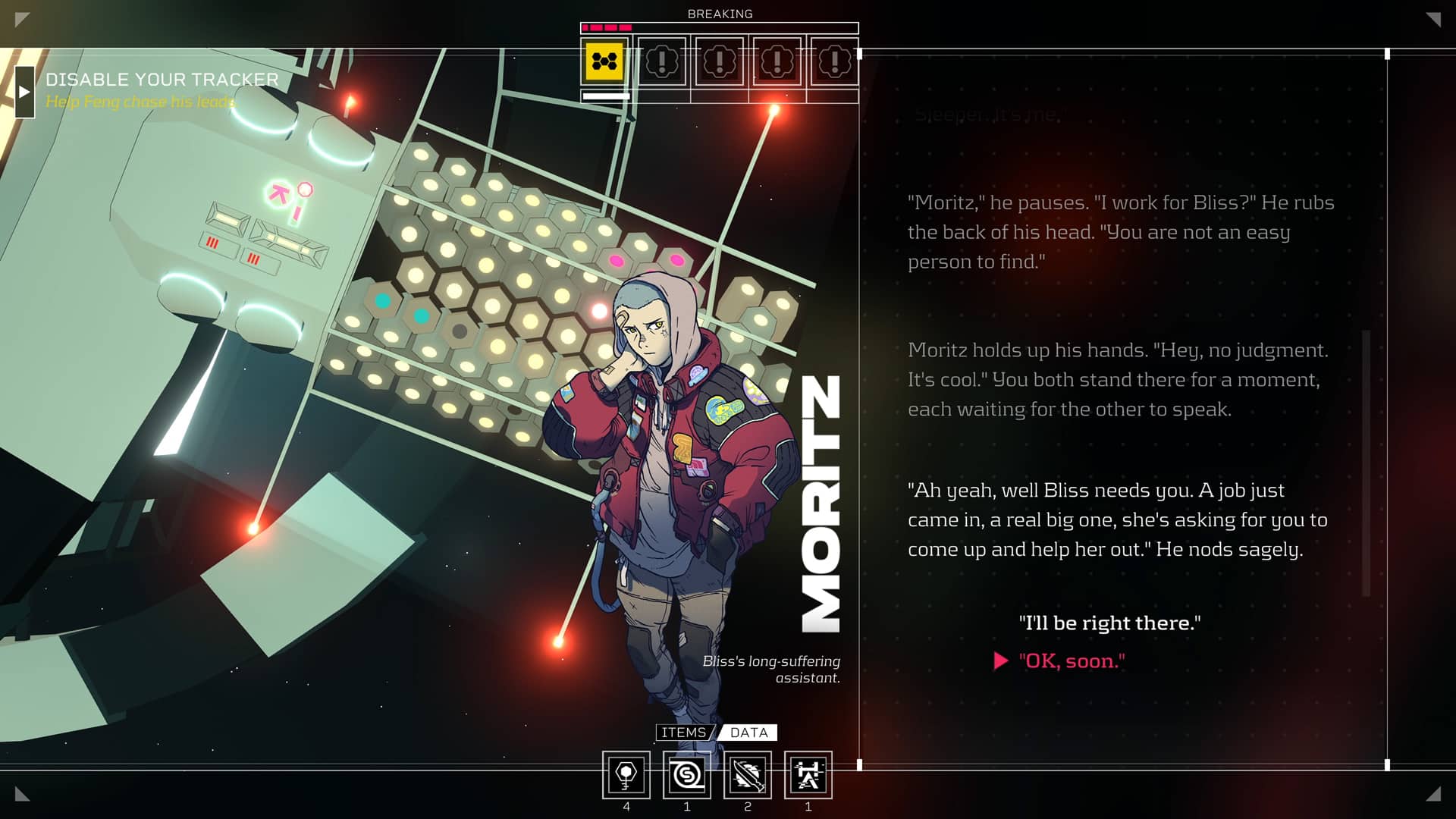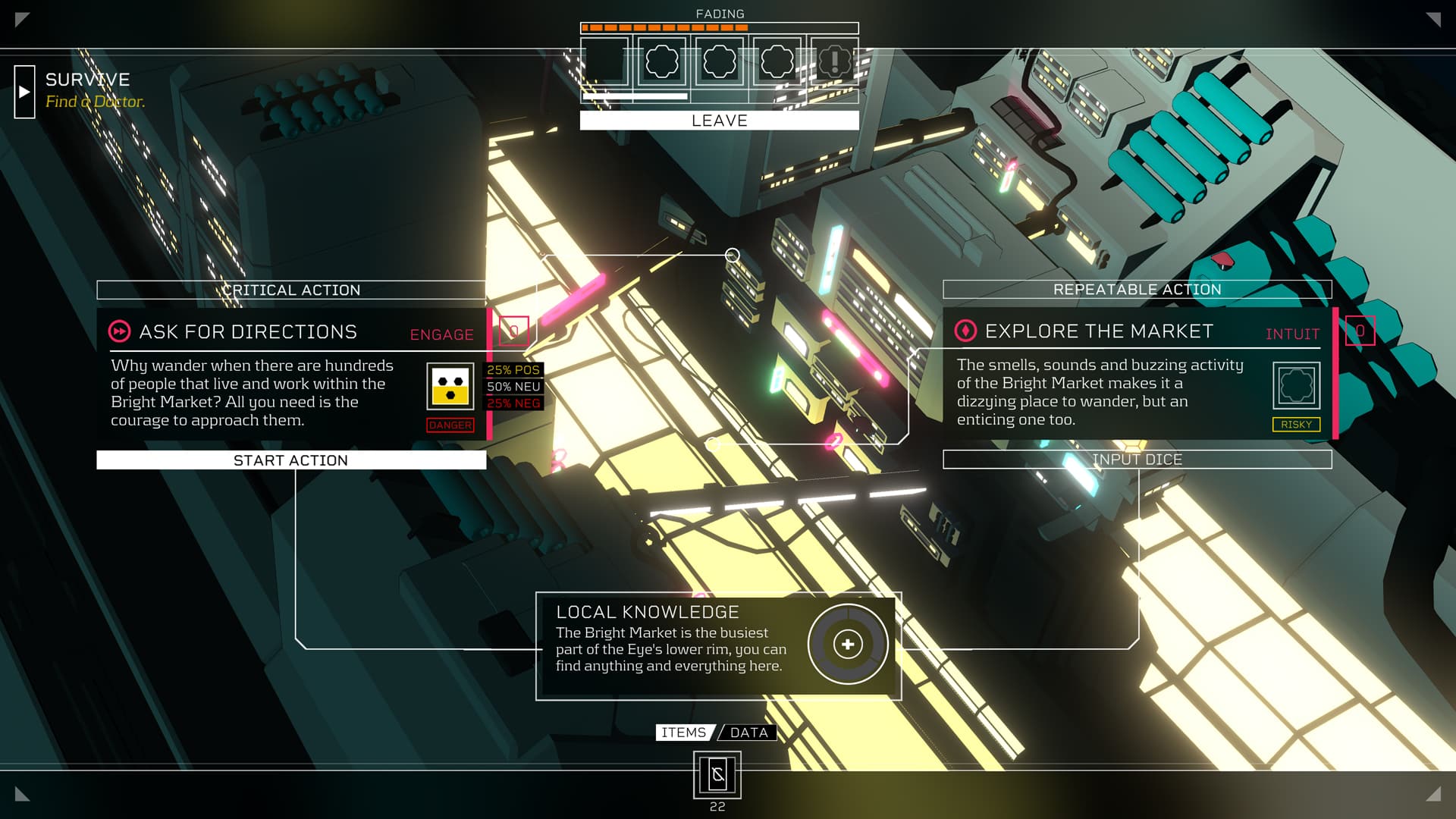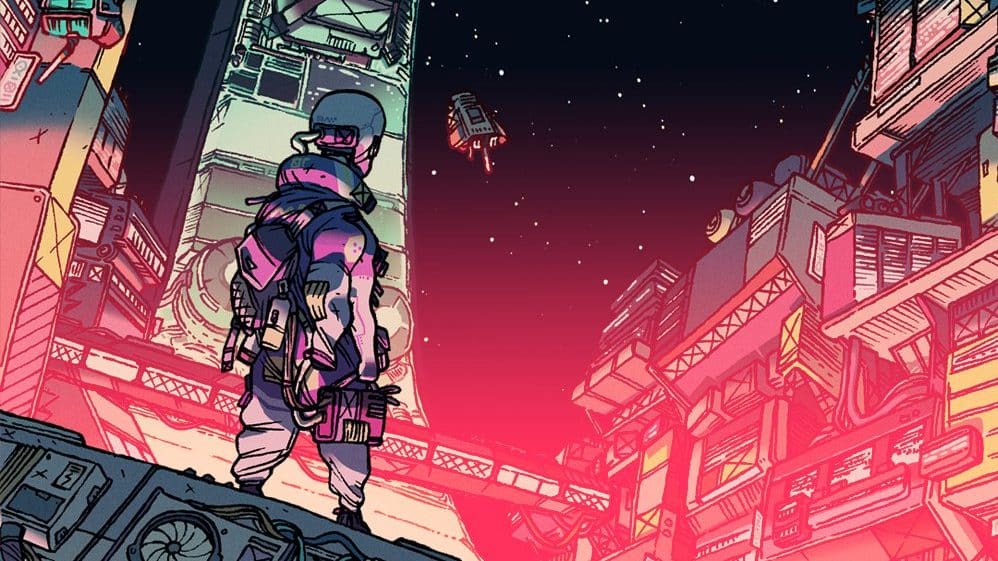It feels weird – after spending time with Jump Over The Age’s new narrative adventure RPG Citizen Sleeper – to be left with thoughts of Dead Space. Specifically, a 2008 E3 trailer for the original game, which sees the camera orbiting around the deathly silent space station Ishimura, intercut with gory visuals, all set to an unnerving (at least at the time) rendition of ‘Twinkle Twinkle Little Star’.
It’s the distance; the sterile remove that rams home the dense, compacted and claustrophobic nature of the horror in the original Dead Space that I’ve always loved. Citizen Sleeper, while not horrific in the same ways as Dead Space, uses that same claustrophobic and ‘middle of nowhere’ nature of its far-flung space-station Erlin’s Eye, to tell stories of self-hood, labour struggle, and good old corporate espionage.
The opening of Citizen Sleeper offers you a choice between three starting classes with various pre-assigned strengths and weaknesses, but the most important role-playing choice is already made for you at the outset. You are a Sleeper, an emulated consciousness of someone who signed on the dotted line at Essen-Arp, one of Citizen Sleepers’ rarely seen, but constantly felt corporate entities.
Sleepers are created for the express purpose of constant work-schedules in dangerous or undesirable careers; devoid of rights, denied any real status within the world, made to be consumed by the system that birthed them, Sleepers are the logical end point of technocratic no-holes-barred capitalism unleashed upon the working class – the only problem being that you’ve managed to escape the control of your creators.
Essen-Arps’ failsafe against Sleepers’ freedom is a tightly controlled stabiliser substance which is the only thing standing between you and slow, agonising deterioration and eventual system failure; sparking and spasming through your final moments in some anonymous alleyway within the space-station sprawl. In Citizen Sleeper, your early concerns are managing your two quickly-emptying bars of ‘condition’ and ‘energy’ – the former of which can only be restored with more stabiliser, and the latter of which is basically health and hunger combined.
Taking a chance
You’re a desperate, pitiable thing in the opening hours of Citizen Sleeper, helplessly reliant on doctors under the thumb of local gangs and shipyard foremen who need extra bodies for the wrecking crew to make your way through your first few cycles (or days) on the Eye.
Your chances of having a successful day of odd-jobs and self-preservation in Citizen Sleeper is determined at the start of each cycle, as five dice are rolled and the results displayed on your screen. Each number amounts to your percentage chance at success in whatever task you assign it to. Sixes will give you a 100% chance at a positive outcome; however, assign a three, and you’ve got a 50% chance at a neutral outcome, or a 25% chance of either positive or negative.
Progressing along Citizen Sleeper’s compact skill tree can also add buffs and other variables to each task; upgrade your ‘endurance’ stat enough and you’ll get a +1 to your die, provided the task is classed as an endurance task. It’s a novel system, easily distilling down the risk in everything from aiming a gun to growing mushrooms.

Things get complicated by the fact that as your condition bar deteriorates, the amount of dice rolled at the start of each cycle drops, lowering not only your overall actions for the cycle, but also the odds that you’ll have high dice rolls, and good outcomes. Every single undertaking in Citizen Sleeper’s early game is a gamble, connecting directly to your Sleeper’s fight for survival, and the seemingly random and indifferent disposition of the society you escaped Essen-Arp to join.
Watchful Eyes
You’ll spend the majority of the game floating above all the muck and pain though; gliding silently across the surface of the great spoked wheel that is Erlin’s Eye, choosing between pips on a map that represent the various nightclubs, work yards, office blocks and spaceports that dot its interior rim. There is a bit of a disconnect here, between the quiet, removed view given while drifting above the station, and the bustling, complicated, and compelling implications of Citizen Sleeper’s writing, a gap I was desperate to cross more often.
Exquisite character art is a welcome change of pace between the hyper-clean, sterile presentation of the game’s interfaces, breathing an energy and pop into the game that it could do with more of. I could look at these characters for hours noticing tiny details; a child’s untrusting side-eye as she buries her face into her father’s scuffed work jacket, or the perfectly garish shirt of some insufferable, nihilistic bounty hunter.

Marrying these illustrations with Citizen Sleeper’s dialogue is where the game truly shines, as the thoughtful, evocative writing flows by in a style not dissimilar to games like Disco Elysium or the recently revelatory NORCO, and conversations are elevated as they dance with character designs detailed and interesting enough that they manage to imbue extra life into the words scrolling across the page.
When you’re not engaging with the cast though, you’re using your limited resources to survive cycle-to-cycle whilst also pursuing the game’s many side-quests – referred to as ‘Drives’ – which can range from destroying the reputation of one of the stations most protected and conniving corporate players, to completely dismantling the constraints placed on the entities that live within the Eye’s otherwise invisible cyberspace layer, a world you can enter into, and use to collect data and resources.
Life is never simple in Citizen Sleeper, and the game’s demands for your patience while it doles out dense, multi-staged, and resource-intensive questlines can easily become trying when they’re combined with long periods of waiting while some side-character disappears and does something interesting off-screen. The writing here is good, but the narrative morsels doled out before I was expected to sacrifice even more time and resources started to feel cheaper and cheaper the more time I invested in them.
The game is also hampered unflatteringly by its core mechanic, with any kind of role-playing outside of dialogue choices pretty quickly flattened after a few upgrade points are assigned to your skill tree. Characters that start with deficits in skills like Engineer or Intuit are quickly upgraded, and it became rare for me to not receiving at least a +1 on almost every dice roll only hours in.

Worse yet, tasks never feel any different, regardless of the fact that they determine outcomes relative to your skills. After a while, my Sleeper started to feel like someone who was particularly lucky, or just good at weighing up the odds of things, rather than an accomplished engineer or an empathetic programmer.
The stories in Citizen Sleeper are worth hearing, but the fairly sparse and restrictive mechanics underpinning the game begin to buckle under the demands of that storytelling. More complications resulting from task categories may have expanded the possibilities here, but despite this, Citizen Sleeper remains a great cyberpunk diorama, and it’s well worth uncovering all its little details.
3 Stars: ★★★
Citizen Sleeper
Platforms: PC, Nintendo Switch, Xbox Series X/S, Xbox One
Developer: Jump Over The Age
Publisher: Fellow Traveller
Release Date: 5 May 2022
The





